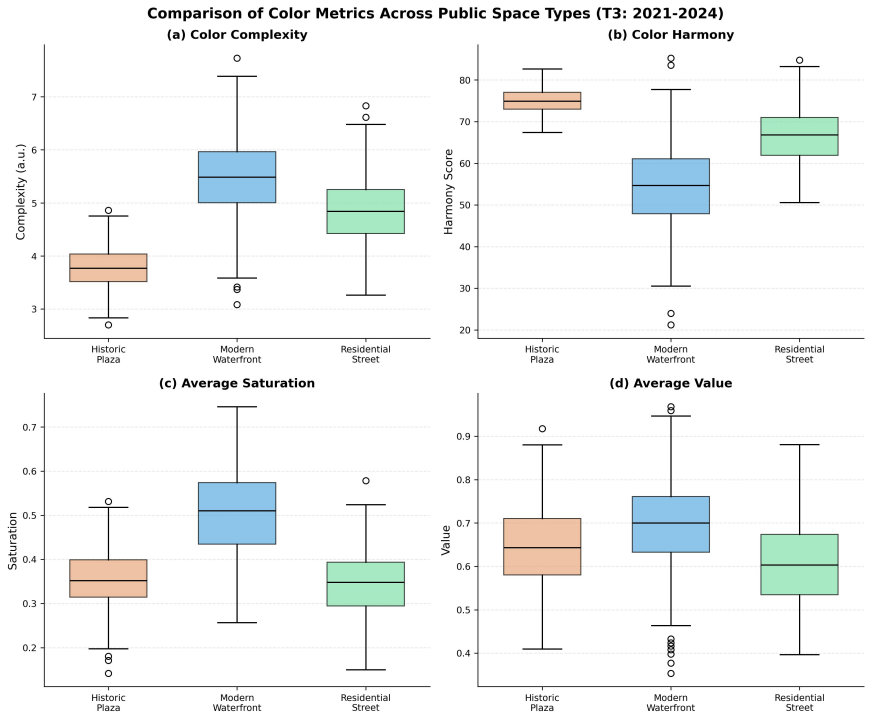The Chromatic Evolution of Public Spaces in a Global-Local City: A Computational Analysis of Macau's Urban Identity
Keywords:
Urban Color, Public Space, Macau, Computer Vision, Cultural AnalyticsAbstract
Urban color plays a crucial role in shaping a city's identity and influencing residents' experiences. In the context of globalization and tourism, how historical cities like Macau preserve their distinctive color characteristics has become an important research question. While previous studies have mainly concentrated on building facades, there remains a lack of quantitative research on the overall color evolution of urban public spaces and the forces driving these changes. To address this gap, this study adopts a combination of cultural analytics and computer vision methods to conduct a long-term, large-scale analysis of color dynamics in Macau's public spaces. A multi-dimensional analytical framework integrating spatial and temporal perspectives is proposed to systematically quantify the evolutionary patterns of urban color. Using Google Street View (GSV) images as the primary data source, thousands of images covering Macau's major public areas—including historic squares, modern waterfronts, and residential streets—were collected. Through semantic segmentation, key elements such as sky, vegetation, buildings, and ground were extracted, and k-means clustering was applied to identify the dominant colors of each element. These were then quantitatively analyzed across four dimensions: color complexity, harmony, saturation, and brightness. The results reveal a marked evolution in the color characteristics of Macau's public spaces over the past two decades. Historic squares have gradually converged toward a unified "heritagized" palette dominated by yellows and pinks, whereas modern waterfronts exhibit increasing diversity and commercialization. Although overall color saturation has risen, color harmony shows divergent trends among different areas. These patterns reflect the interplay between heritage conservation policies, tourism development, and urban modernization. By uncovering the dynamic processes and multiple drivers of urban color change, this study provides a new quantitative perspective for urban color planning and heritage conservation, emphasizing that color should be regarded as a dynamic socio-cultural ecosystem rather than a static aesthetic attribute—an approach that can help better balance local identity with global influences.
Downloads






